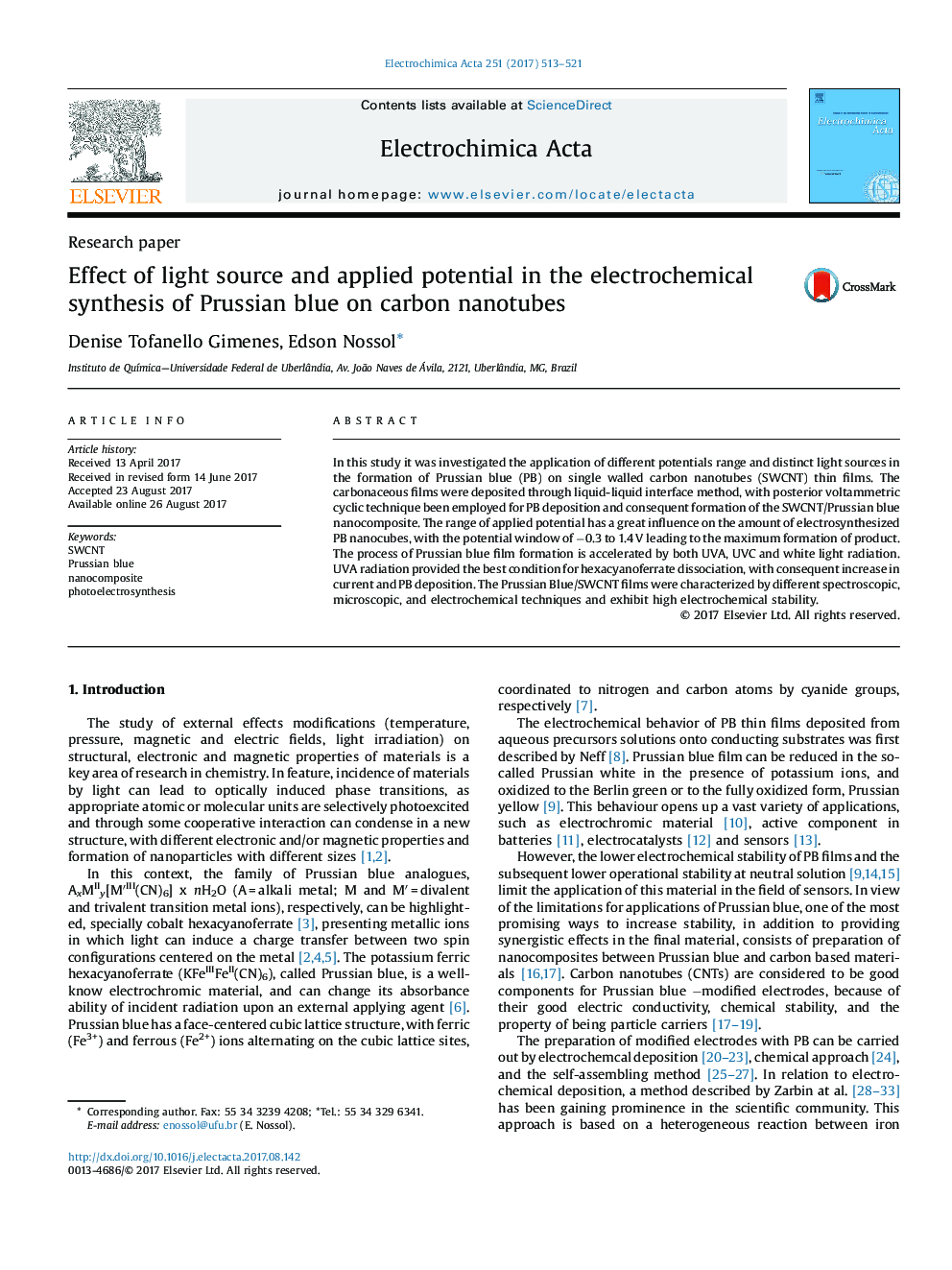| کد مقاله | کد نشریه | سال انتشار | مقاله انگلیسی | نسخه تمام متن |
|---|---|---|---|---|
| 6469961 | 1424106 | 2017 | 9 صفحه PDF | دانلود رایگان |
In this study it was investigated the application of different potentials range and distinct light sources in the formation of Prussian blue (PB) on single walled carbon nanotubes (SWCNT) thin films. The carbonaceous films were deposited through liquid-liquid interface method, with posterior voltammetric cyclic technique been employed for PB deposition and consequent formation of the SWCNT/Prussian blue nanocomposite. The range of applied potential has a great influence on the amount of electrosynthesized PB nanocubes, with the potential window of â0.3 to 1.4Â V leading to the maximum formation of product. The process of Prussian blue film formation is accelerated by both UVA, UVC and white light radiation. UVA radiation provided the best condition for hexacyanoferrate dissociation, with consequent increase in current and PB deposition. The Prussian Blue/SWCNT films were characterized by different spectroscopic, microscopic, and electrochemical techniques and exhibit high electrochemical stability.
Journal: Electrochimica Acta - Volume 251, 10 October 2017, Pages 513-521
